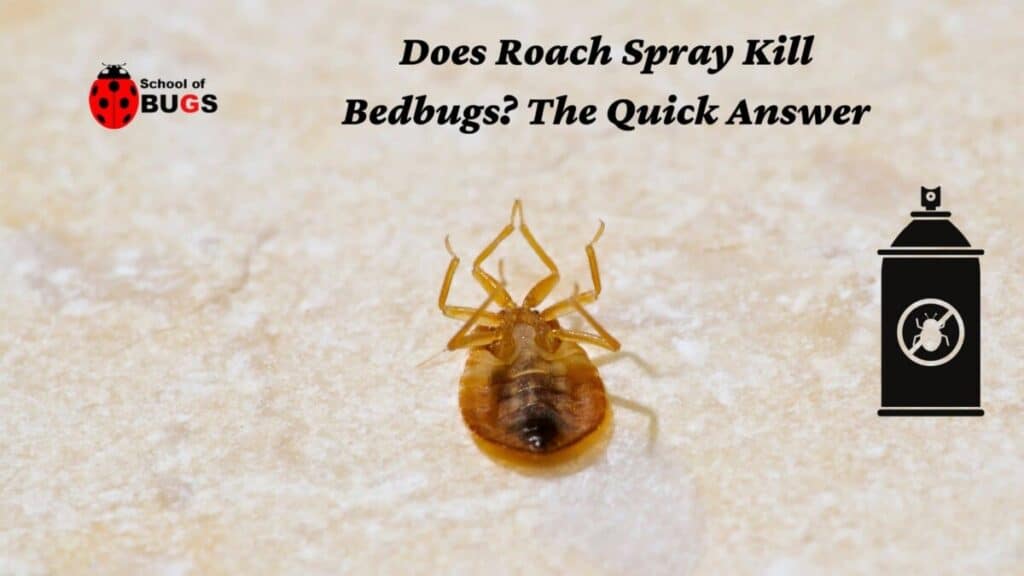
A can of Raid or Hot Shot cockroach spray is some nasty stuff. When it strikes the roach’s exoskeleton, it is immediately absorbed and it begins to target the nervous system, blocking the nerves’ ability to transmit signals throughout the roach’s body. It’s easy to assume that it must do the same thing to bed bugs.
The answer is somewhere in between. If the cockroach spray happens to directly impact a bedbug, it will kill it.
However, bed bugs are more sly than roaches and they will simply burrow deep, waiting out the effects of the spray before crawling to the surface again.
It’s kind of mystifying how they know that the bed has just been saturated in something that will effectively shut their nervous system down.
Plus, there is also the type of chemical in the Raid or Hot Shot can consider as well. Not all cockroach-killing pesticides are created equally.
Your Cockroach Spray May Not Kill Bedbugs
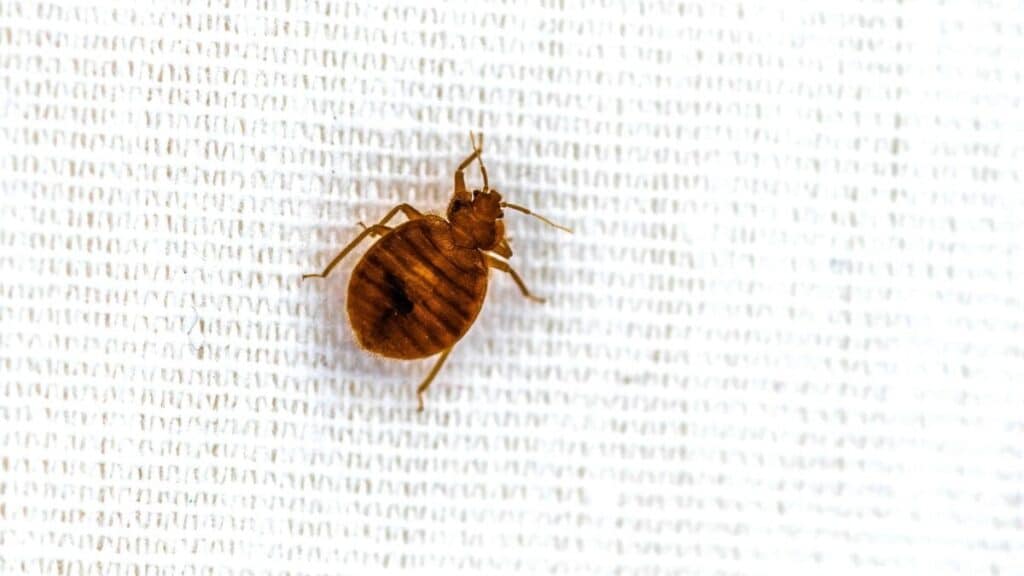
That’s the problem with bed bugs. They’re like submarines out on the ocean. Whenever a threat is detected, they deep dive for better protection.
Even if they are there and you successfully lather them in the luxuriant, nerve-killing chemicals, it might not affect them.
Some cockroach sprays will certainly kill them and some won’t because there are different chemicals for cockroaches.
If you heft your can of Raid up, you’ll probably notice that there are hundreds of tiny little words in several categories.
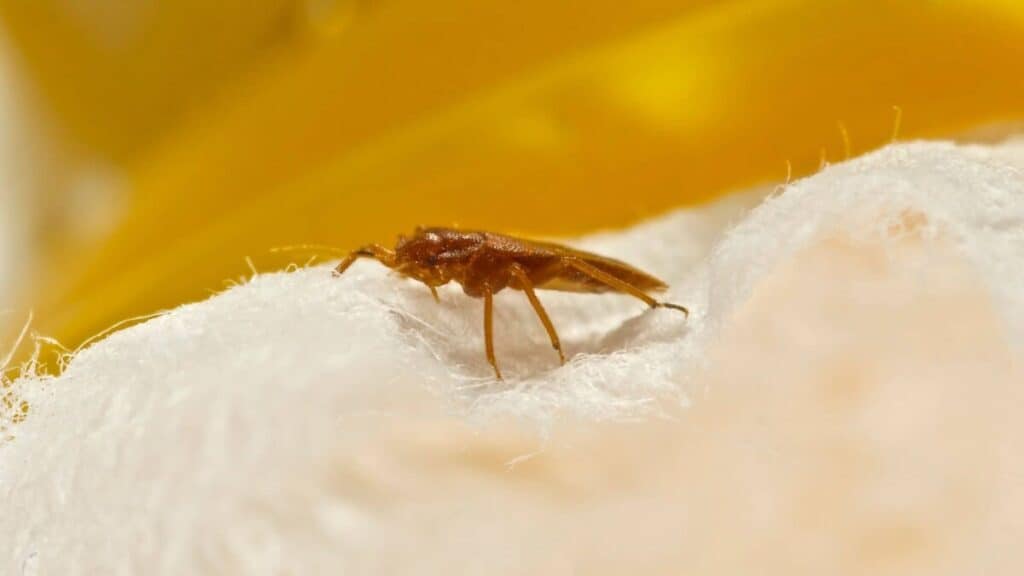
Even someone with 20/20 vision will be better served to grab a magnifying glass. Somewhere amongst all the jargon and word salad, there should be a section that covers what the spray kills.
Just because it says “cockroaches” on the front of the can, doesn’t mean that cockroaches are the only bug that the chemical kills.
There are likely several other insects that the particular chemical in your can will affect, to one degree or another.
Some of them may list bedbugs and some may not, so you should take the time to read the contents of the can before you saturate the bed with it.
The Bed Bugs are Gone
As we mentioned above, bedbugs may do a deep dive on you, hiding deep inside the mattress until it’s safe to come out again. There is also the fact that bed bugs don’t hang out where they are visible to people.
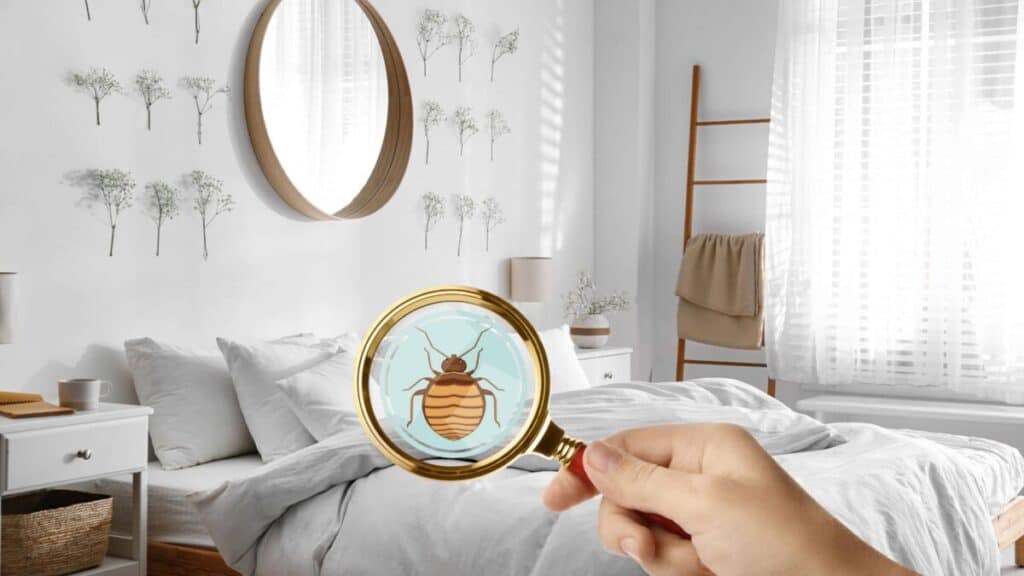
They are primarily nocturnal pests that come out at night and start feasting on your skin. That means spraying the bed won’t hit many of them if there are any hanging around at all.
Once the roach spray is on the mattress, bed bugs won’t surface until the viability of the chemical is gone.
It may be enough to make you think you got rid of them. In the meantime, they’re buried deep and continuing to breed.
In time, they will surface again in greater numbers than before. Most people think that bedbugs are the natural result of living in filth but that’s not the case.
If you own pets, bed bugs will be more than happy to hitch a ride inside the home. They’ll jump off at the first opportunity and start to breed. Though they are small enough to dive deep inside your bed mattress, bed bugs also prefer other areas of the bed.
They like to hang out in the cracks of your bedframe, where one piece comes together, flush against another.
They also like to hang out at the corner edges of the mattress, where they can congregate on the bottom side of the mattress until nighttime.
Reasons You Should Avoid Roach Spray on Your Bed Mattress
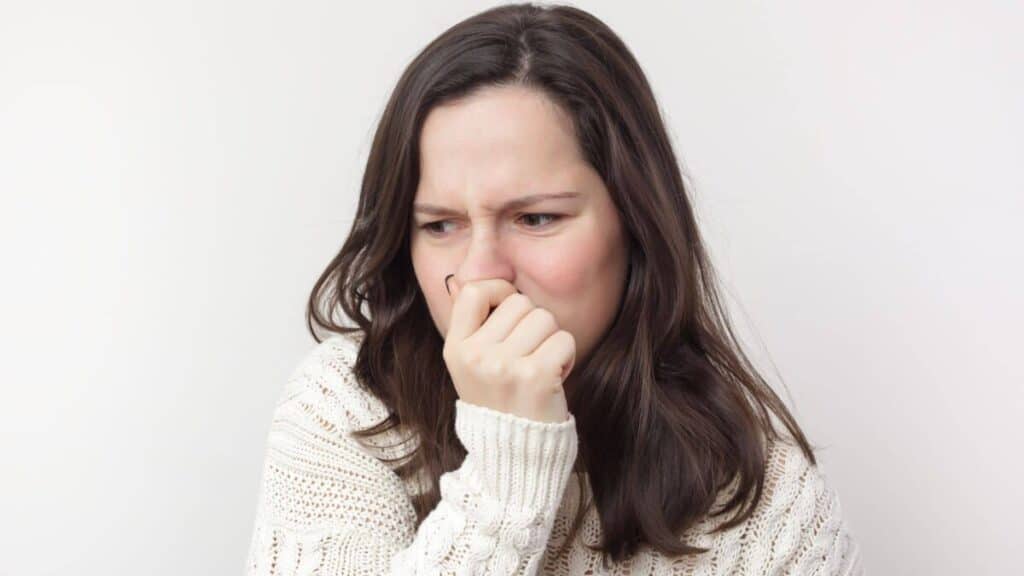
While it’s a 50/50 chance that your roach spray will even have a minor effect on the bed bugs, there are other side effects worth considering.
- Roach spray smells awful
- It’s not exactly good for you
- The vapors can be harmful in unventilated rooms
- The can explicitly states to “avoid contact with bare skin, your eyes, and your clothes”
- It may end up being a complete waste of time
If you prefer a healthy, clean smell in your bedroom, cockroach spray is going to ruin that for a while. No matter how much you attempt to steam clean or vacuum it out of the mattress, it’s going to smell awful.
Worse yet, your nose will acclimate to the smell and only your guests will know that you just hosed something down with Raid or Hot Shot somewhere. The stuff is also not good for you in every sense. There are warnings all over the can for a reason.
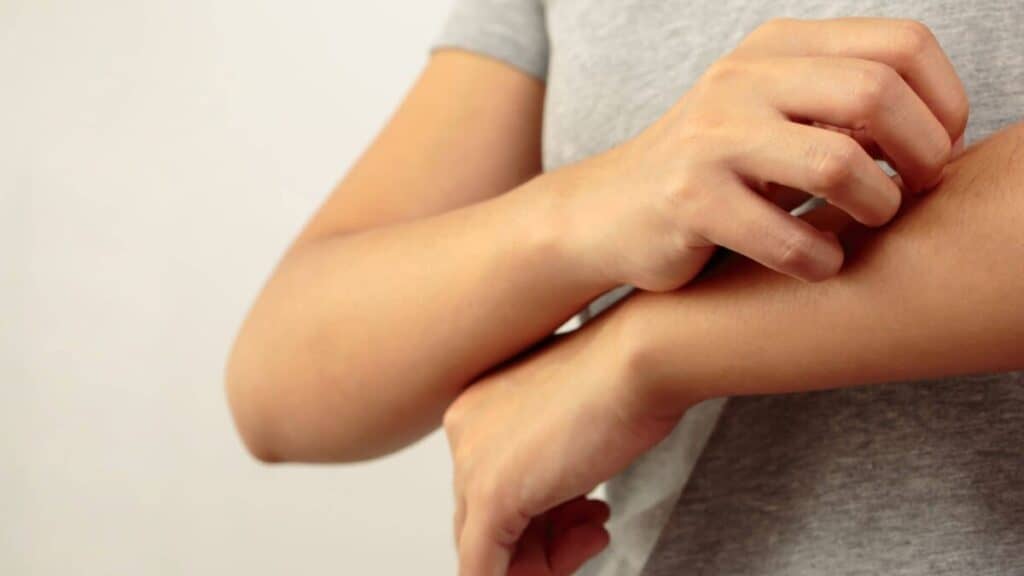
Even if the directions say you can spray it on a bed mattress, these are synthetic chemicals that are not meant to be consumed by people in any way.
Getting it in your eyes, skin, or even on your clothes might end up in a visit to the ER, depending on how sensitive your skin is.
This is true even if you are using a can of insecticide that explicitly states it kills bedbugs. It’s just not good for you.
How to Get Rid of Bedbugs the Right Way
There are more than a few ways to go about killing bedbugs and preventing future infestations. A can of insecticide isn’t the only way to go about it. It just happens to be relatively cheap and convenient.
- Natural methods
- Traps
- Encase the bed in a vacuum
- Heat and cold
- Chemicals as a last resort
Natural Methods
A lot of people shun natural methods, assuming that it’s like taking herbal supplements when you’re sick. They don’t believe that anything can trump a synthetic version of something that’s created in a lab. Nothing could be further from the truth.
Diatomaceous Earth is incredibly versatile. You can use it safely on your pets to rid them of fleas or even spread it in your garden to kill insects before they can attack your plants. Diatomaceous Earth is nothing more than tiny shards of razor-sharp particles.

These particles cut the bed bugs into ribbons, draining their fluids and dehydrating them. It takes time—perhaps up to a week but it does the trick. Just don’t inhale the stuff as it will do the same thing inside your lungs. Other than that, it’s completely non-toxic.
Baking soda, tea tree oil, and black walnut tea are great options as well. All three are natural pesticides, effectively replicating what Diatomaceous Earth does.
While baking soda and Diatomaceous Earth should be applied on the mattress and the corners or places in the frame that are separated, tea tree oil and black walnut tea should only go in the cracks and crevices of the frame, not the mattress.

Traps
Moat traps are the most effective but you can also use sticky pads in all of the tight corners and crevices of the bed frame.
Bed bugs do travel to the floor so you can set your moat traps and sticky pads under the bed.
If you don’t know how to make a moat trap, there is a video instructional on how to do it here. It’s quite easy to make and fairly effective, especially in combination with sticky traps.
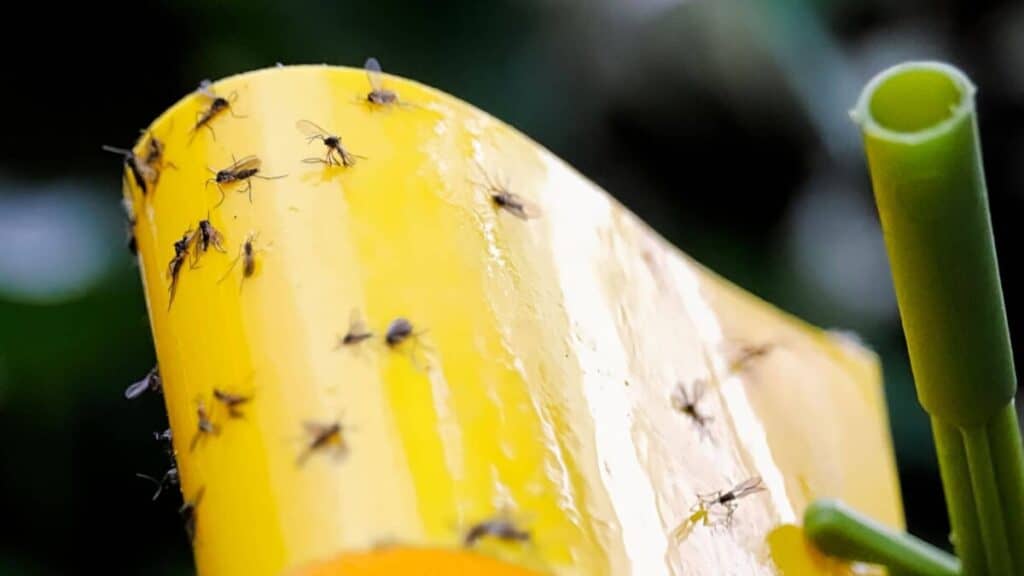
Encasement and Vacuum
You need to get a hold of a zippered, plastic sheet for your bed. Make sure it’s the right size for your mattress.
Completely encase the mattress and zip it up. Insert the end of a vacuum hose right where the zipper ends and the mattress sheet is almost completely enclosed.
Use your hand to squeeze the material around the hose and turn the vacuum on. Suck all the air out. You’ll see the sheet and mattress collapse a little or a lot, depending on the mattress material.
When you’re done, quickly release the material and finish zipping it up. Leave it that way for 24 hours. You can allow air back in after a day but leave the encasement sheet on.
This will help you spot bed bugs as they flee. They’re going to flee because you will treat the bed frame with whatever you decide to use.
The bed bugs within the mattress will suffocate and die. It will also help to avoid a new infestation if you don’t quite get all the ones on the bed frame.
Heat and Cold
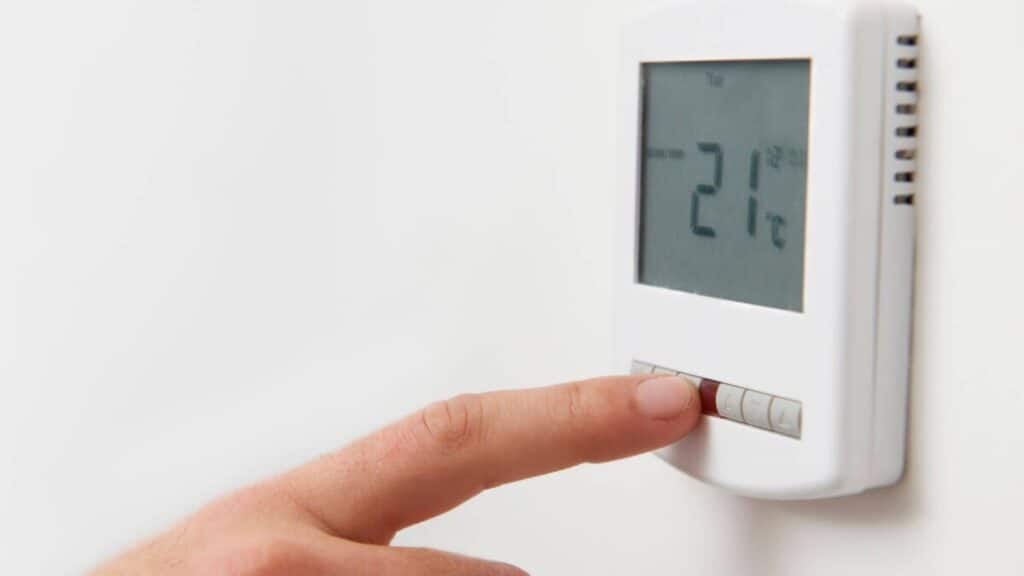
Wash everything in the bedroom that can go in the washer and only use hot water when you run it through. Bed bugs can’t stand the heat. If their bodies reach 113°F, they’ll start dying.
You can also take your mattress outside, assuming its summertime, and place it in direct sunlight while you work on cleaning and sanitizing the frame.
Cold is also an effective killer. If the temperature drops below 0℉, they’ll start dying. You obviously can’t stick a mattress in your freezer, but if you’re in a northern climate in the thick of winter, you can certainly toss your mattress outside for a bit.
Anything small, such as bundled up sheets, pillows, pillowcases, and stuffed animals will fit in the freezer and you should leave them in there for four days. That’s the amount of time it takes to completely eradicate all of the bed bugs.
Pest Control
If you feel like you’re at your wit’s end or you simply don’t have the time to take the above measures, you can always call in pest control.
It’s the most expensive option you can take but it’s also the quickest and most effective.

Pest control will probably find out the severity of your problem and identify things you never considered in your battle to control the bed bugs. Your other option is to go out and purchase your own chemicals.
You should stay away from Raid or Hot Shot spray cans that are designed for roaches. Your problem is bed bugs and bed bugs should be the primary name you see on the can.
Bed bugs are a part of a larger group of insects affected by certain chemicals, so you may see bed bugs as a part of a larger series of insects.
So long as the can specifically say “bed bugs,” you have what you need to get started. Make sure you follow the directions on the can and don’t deviate from them in any way.
All Things Considered
Just because a can of insecticide slaughters roaches, doesn’t mean it will do the same for bed bugs. Odds are, if it hits the bed bugs directly, it will kill them.
Unfortunately, it’s a lot more complicated than that. If you’re dealing with an infestation of bed bugs, always approach it with methods to specifically kill bed bugs.
Alright, that’s it for this article, here are a few hand-selected articles that you might also find interesting reads:
Does Vinegar Kill Cockroaches?How to Keep Bugs Out of your Conservatory
How to Get Rid of Tiny Grey Bugs in My House (And What are They?)
Recent Posts
Tiny Black Bugs in Bathroom NO WINGS: What They Are and What to Do!
Finding tiny black bugs in your bathroom can be uncomfortable, to say the least. Especially if they are persistent, or they appear in very large numbers, which they often like to do. When it...
Tiny Black Bugs in Plant Soil - What Are They & What To Do About It
A short horror story: You get a new houseplant. You do your best to take care of it. You’ve ensured that it has the right soil, the right amount of sun, it gets enough water. And then one day, you...

